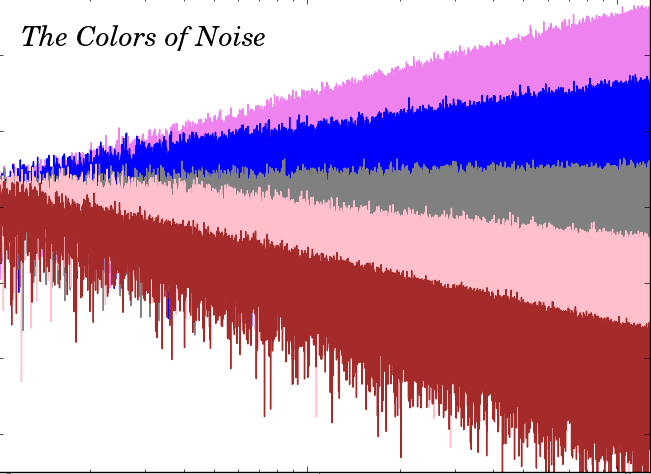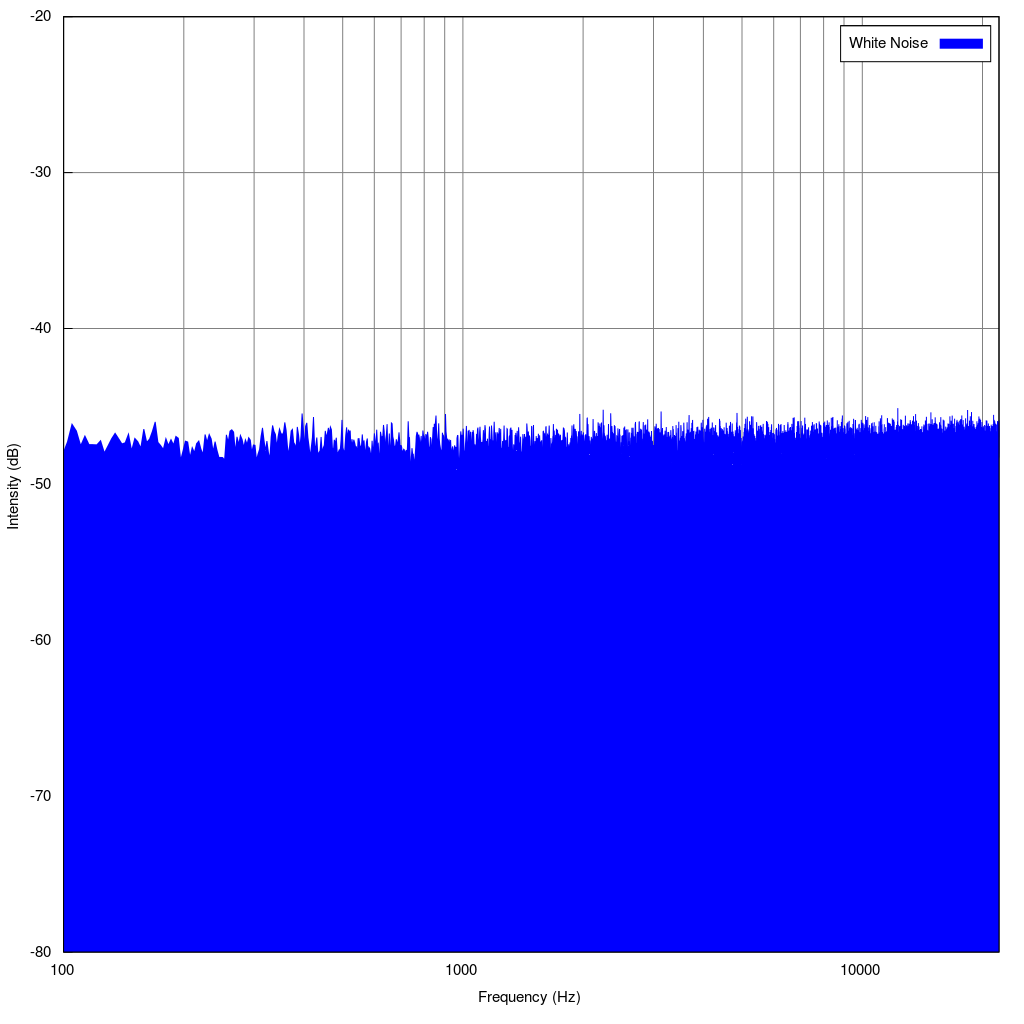- in Production by Bobby Owsinski
The Not-So-Subtle Differences Between White, Pink, Brown And Blue Noise

I know you just read the title and thought, “I knew about white and pink noise, but what the heck is brown and blue noise?” Well, they’re a real thing and used more often than you think. But the differences between white, pink, blue and brown? It all comes down to frequency and amplitude.
What Is Noise?
While we’re all familiar with background or ambient noise, audio engineers have been dealing with electronic noise for decades. To put it simply, that’s the sound of electrons bouncing through electronic components (called “thermal noise”). We hear that in the form of hiss, and equipment designers have been doing everything they can since the beginning of electronics to keep it to a minimum. That’s not the kind of noise that we’re talking about though.
When it comes to white, pink, blue or brown noises, these are continuous, unchanging, random, uncorrelated samples that are intentionally generated. Originally this was for various kinds of system measurement, but other uses have been found along the way as well.
White Noise

White is generated noise with equal amplitude that’s distributed evenly across our spectrum of hearing and a little beyond, from 20Hz to 20kHz. It’s pretty harsh sounding, and doesn’t represent too much of what we hear in nature, but it’s been found to be extremely useful of one thing – it’s masking effect.
Masking is when one sound is loud enough that you concentrate on it rather than other sounds that might be present. Many people use it to help them sleep, or it’s sometimes used in an office setting to help workers concentrate better by masking out the sounds of other workers.
Pink Noise

Pink is used most often in audio testing because it closely approximates how we hear. The energy rolls off at about 3dB per octave, and the acoustic energy is equal in all frequency bands. In other words, it’s white noise with decreased high frequencies. Since our hearing is more sensitive to higher frequencies than lower ones, that makes the spectrum of pink noise excellent for acoustic tests like room tuning.
Pink noise has recently found a new use also in sleep enhancement. It was discovered people who fall asleep to pink noise rather than white tend to sleep longer and deeper.
Brown Noise

Brown (sometimes call Brownian or red noise, and not to be confused with the Brown Tone) doesn’t actually come from a color but from the person that discovered it – Dr. Robert Brown. It describes the random motion of water in a stream or the walk of a drunk person. In this case, the energy falls off at 6dB per octave, which means that there’s nothing over 2kHz.
Although brown noise is also used for sleep enhancement, it’s actually been a staple of sound designers for sci-fi films for years, often used as background for scenes set in spacecraft engine rooms.
Blue Noise

Blue is the opposite of pink noise in that the level actually increases by 3dB per octave and has minimal low frequency components. That makes it particularly harsh sounding, but it is useful for dithering (decreasing distortion of low level digital signals). It does have outside analogs though. Retinal cells that are arranged in a blue-noise-like pattern yield good visual resolution, and Checkov radiation (the blue glow of an underwater nuclear reactor) is in a blue noise pattern as well.
Believe it or not, there are other types of noise as well. Violet, grey, green, black and noisy white all have their places in communications, computer or display electronics. When it comes to audio though, there’s one that rules and that’s pink.

